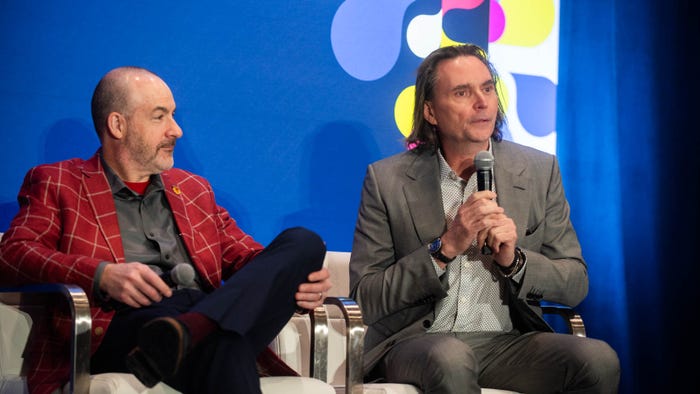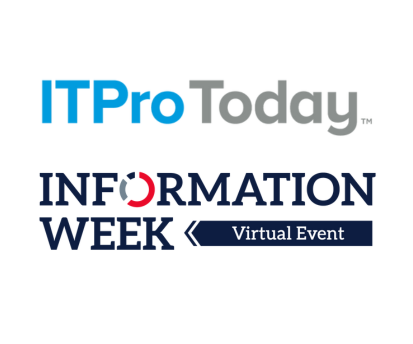Four Years After 9/11, TSA Still Wrestling With Jurassic Technology
Nearly four years after the Sept. 11 terrorist attacks, the Homeland Security Department is still coming to grips with the massive mission it's been handed. While the department this week has contributed resources to aid the victims of Hurricane Katrina, it also must be ever vigilant in focusing on its primary goal of preventing terrorist attacks in the U.S. One of Homeland Security's most challenged agencies has been the Transportation Security Administration, which early on was saddled with ou

Nearly four years after the Sept. 11 terrorist attacks, the Homeland Security Department is still coming to grips with the massive mission it's been handed.
While the department this week has contributed resources to aid the victims of Hurricane Katrina, it also must be ever vigilant in focusing on its primary goal of preventing terrorist attacks in the U.S.
One of Homeland Security's most challenged agencies has been the Transportation Security Administration, which early on was saddled with outdated technology and questioned at every turn about how it will collect, use, and secure information about air-travel passengers. A former top-level TSA executive spoke with me earlier today about what the agency is facing and some new technologies that should be deployed to help prevent the next terrorist attack.
As assistant secretary of Homeland Security for the TSA, David Stone spent 18 months overseeing a $5.6 billion budget and 54,000 personnel whose mission is to secure our country's mass transit, rail, highway, maritime, and aviation travel. He left the agency in June to focus on the development and implementation of private-sector security technology designed to prevent terrorist attacks on our transportation infrastructure.
To that end, Stone earlier this week officially joined the advisory board of Vidient Systems Inc., a maker of video-surveillance software. Stone, who spent part of his career as federal security director at Los Angeles International Airport, recently received a demonstration of Vidient's SmartCatch video-behavior-recognition software at San Francisco International Airport. What Stone likes about SmartCatch is its emphasis on prevention rather than on static monitoring and response. "SmartCatch looks for anomalies captured on video and sends flags to security personnel," Stone says. "The system works in real time, which is where we should be heading."
At the 450 federally run airports in the U.S., the TSA employs 47,500 screeners, 1,200 of which are generally assigned to patrol entryways and exit lanes to make sure people aren't trying to sneak into secure areas or improperly enter terminals. Technology can be applied to remotely monitor such locations so that those 1,200 screeners can be more efficiently deployed, Stone says.
SmartCatch can be used to identify situations when people are moving in the wrong direction at exit lanes, when a person without clearance is "piggybacking," or trying to follow someone else into a secure area, when a vehicle is parked illegally, or when there's movement near a perimeter fence. If the cameras connected to the software detect any of these situations, they send an alert to TSA staff through a pager, E-mail, or some other method.
While Stone is impressed with Vidient's technology, he also knows firsthand that the TSA is struggling to update older equipment on a budget that forces the agency to prioritize its technology implementations. One of TSA's priorities for this year and next is to install explosives-detection trace portals at airports. In the trace portal pilot program under way in at least 30 airports, passengers walk through portals similar to the walk-through metal detectors. Puffs of air are blown at passengers, and samples are then collected and analyzed for explosives. The TSA is committed to spending about $100 million on the technology through the end of fiscal 2006.
Another promising technology the TSA is considering is the Carry-On Baggage Real-time Assessment, or Cobra, high-speed scanning system developed by Analogic Corp. Cobra is able to detect explosives and other contraband, such as guns and knives, by imaging the contents of a bag quickly in three dimensions. "That sort of technology is what we need at the checkpoints, rather than the initial X-rays that were put in place," Stone says.
In fact, the TSA was hindered from day one by the Transportation Department's decision to invest in outdated security equipment such as X-rays, CAT scans, and metal detectors rather than cutting-edge technology. "The installations weren't even complete when we were told we were using Jurassic Park technology," Stone says. This meant investing time and money training staff on this technology and ate up valuable resources that could be used to more promptly investigate the next generation of technology.
The TSA also repeatedly has faced privacy concerns about the passenger data it collects, particularly through its proposed Secure Flight and Registered Traveler programs. "The technology can do almost anything you want it to do," Stone says. "The issue becomes the control and oversight of that technology. There's tremendous power in the information that's collected."
The high levels of pressure and bureaucracy have taken a toll on the TSA, which last month said goodbye to its CIO. Stone and his team heavily recruited David Zeppieri, who left citing what the TSA calls other "career opportunities." One of Zeppieri's top responsibilities was to deliver broadband connectivity to airports that would allow personnel to leverage technology for monitoring the performance of their security measures, share data and intelligence information among all 450 airports, remotely train TSA employees, and offer users access to HR benefits information. "David's job was to move that ball down the court," Stone says.
Connectivity wasn't rolled out to airports according to how vulnerable they were to attack but rather how ready each airport was to receive the service. About half of the country's airports had high-speed network connectivity by the time Stone left office. Zeppieri has, for now, been replaced by acting CIO Joe Peters.
For more information about the state of IT and homeland security, be sure to see the Sept. 5 issue of InformationWeek for a story package written by newcomer Nicholas Hoover, veteran reporter Eric Chabrow, and myself.
This blog was posted by Larry Greenemeier on Sept. 2, 2005 at 02:48 PM
About the Author(s)
You May Also Like
How to Amplify DevOps with DevSecOps
May 22, 2024Generative AI: Use Cases and Risks in 2024
May 29, 2024Smart Service Management
June 4, 2024





